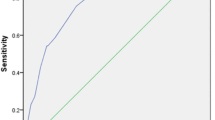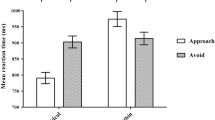Abstract
Dieting is associated with poor psychological health and disordered eating. For this reason, it is important to identify person-level characteristics that influence the effect of dieting on eating pathology. The Psycho-Behavioral Dieting Paradigm posits that high-intensity, appearance-focused dieting is associated with worse outcomes than low intensity, health-focused dieting. Accordingly, individuals who diet in pursuit of the thin-ideal may be at a higher risk for negative outcomes. The current study tests this model by examining associations between body dissatisfaction, dieting, eating pathology, and thin-ideal internalization in a sample of female college students (n = 342). A moderated mediation model informed by the Psycho-Behavioral Dieting Paradigm was tested to evaluate whether the indirect effect of body dissatisfaction on eating pathology through dieting is moderated by thin-ideal internalization. Dieting mediated the relationship between body dissatisfaction and eating pathology, and this mediation effect was moderated by thin-ideal internalization. Specifically, the strength of the mediation effect increased with higher thin-ideal internalization. These results suggest that the explanatory role of dieting in predicting eating pathology is particularly pronounced among women who endorse a preference for a slender body.

Similar content being viewed by others
References
Baron, R. M., & Kenny, D. A. (1986). The moderator-mediator variable distinction in social psychological research: Conceptual, strategic, and statistical considerations. Journal of Personality and Social Psychology, 51, 1173–1182. https://doi.org/10.1037/0022-3514.51.6.1173.
Becker, T. E. (2005). Potential problems in the statistical control of variables in organizational research: A qualitative analysis with recommendations. Organizational Research Methods, 8, 274–289. https://doi.org/10.1177/1094428105278021.
Centers for Disease Control and Prevention (2015, May 15). Body Mass Index (BMI). Retrieved from https://www.cdc.gov/healthyweight/assessing/bmi/index.html.
Cooper, P. J., Taylor, M. J., Cooper, Z., & Fairburn, C. G. (1987). The development and validation of the body shape questionnaire. International Journal of Eating Disorders, 6, 485–494.
Crow, S., Eisenberg, M. E., Story, M., & Neumark-Sztainer, D. (2006). Psychosocial and behavioral correlates of dieting among overweight and non-overweight adolescents. Journal of Adolescent Health, 38, 569–574.
Dakanalis, A., Timko, C. A., Carrà, G., Clerici, M., Zanetti, M. A., Riva, G., & Caccialanza, R. (2014). Testing the original and the extended dual-pathway model of lack of control over eating in adolescent girls. A two-year longitudinal study. Appetite, 82, 180–193. https://doi.org/10.1016/j.appet.2014.07.022.
Espinoza, P., Penelo, E., & Raich, R. M. (2010). Disordered eating behaviors and body image in a longitudinal pilot study of adolescent girls: What happens 2 years later? Body Image, 7, 70–73. https://doi.org/10.1016/j.bodyim.2009.09.002.
Fairburn, C. G., Cooper, Z., Doll, H. A., & Davies, B. A. (2005). Identifying dieters who will develop an eating disorder: A prospective, population-based study. The American Journal of Psychiatry, 162, 2249–2255.
Furnham, A., Badmin, N., & Sneade, I. (2002). Body image dissatisfaction: Gender differences in eating attitudes, self-esteem, and reasons for exercise. The Journal of Psychology, 136, 581–596. https://doi.org/10.1080/00223980209604820.
Garner, D. M., Olmsted, M. P., Bohr, Y., & Garfinkel, P. (1982). The eating attitudes test: Psychometric features and clinical correlates. Psychological Medicine, 12, 871–878.
Greenstein, T. N., & Davis, S. N. (2012). Methods of family research. Thousand Oaks: Sage.
Hayes, A. F. (2013). Introduction to mediation, moderation, and conditional process analysis: A regression-based approach. New York: Guilford Press.
Haynos, A. F., Field, A. E., Wilfley, D. E., & Tanofsky-Kraff, M. (2015). A novel classification paradigm for understanding the positive and negative outcomes associated with dieting. International Journal of Eating Disorders, 48, 362–366. https://doi.org/10.1002/eat.22355.
Holmes, M., Fuller-Tyszkiewicz, M., Skouteris, H., & Broadbent, J. (2014). Tests of an extension of the dual pathway model of bulimic symptoms to the state-based level. Eating Behaviors, 15, 280–285. https://doi.org/10.1016/j.eatbeh.2014.03.011.
Jackson, T., & Chen, H. (2014). Risk factors for disordered eating during early and middle adolescence: A two year longitudinal study of mainland Chinese boys and girls. Journal of Abnormal Child Psychology, 42, 791–802. https://doi.org/10.1007/s10802-013-9823-z.
Keery, H., van den Berg, P., & Thompson, J. K. (2004). An evaluation of the tripartite influence model of body dissatisfaction and eating disturbance with adolescent girls. Body Image, 1, 237–251.
Liechty, J. M., & Lee, M. J. (2013). Longitudinal predictors of dieting and disordered eating among young adults in the U.S. International Journal of Eating Disorders, 46, 790–800. https://doi.org/10.1002/eat.22174.
Preacher, K. J., Rucker, D. D., & Hayes, A. F. (2007). Addressing moderated mediation hypotheses: Theory, methods, and prescriptions. Multivariate Behavioral Research, 42, 185–227.
Putterman, E., & Linden, W. (2004). Appearance versus health: Does the reason for dieting affect dieting behavior? Journal of Behavioral Medicine, 27, 185–204. https://doi.org/10.1023/B:JOBM.0000019851.37389.a7.
Rosen, J. C., Jones, A., Ramirez, E., & Waxman, S. (1996). Body shape questionnaire: Studies of validity and reliability. International Journal of Eating Disorders, 20, 315–319.
Shroff, H., & Thompson, J. K. (2006). The tripartite influence model of body image and eating disturbance: A replication with adolescent girls. Body Image, 3, 17–23.
Stice, E. (2001). A prospective test of the dual-pathway model of bulimic pathology: Mediating effects of dieting and negative affect. Journal of Abnormal Psychology, 110, 124–135.
Stice, E. (2002). Risk and maintenance factors for eating pathology: a meta-analytic review. Psychological Bulletin, 128, 825–848.
Stice, E., & Shaw, H. E. (2002). Role of body dissatisfaction in the onset and maintenance of eating pathology: A synthesis of research findings. Journal of Psychosomatic Research, 53, 985–993.
Stice, E., & Whitenton, K. (2002). Risk factors for body dissatisfaction in adolescent girls: A longitudinal investigation. Developmental Psychology, 38, 669–678.
Stice, E., Ziemba, C., Margolis, J., & Flick, P. (1996). The dual pathway model differentiates bulimics, subclinical bulimics, and controls: Testing the continuity hypothesis. Behavior Therapy, 27, 531–549.
Stice, E., Shaw, H., Becker, C. B., & Rohde, P. (2008). Dissonance-based interventions for the prevention of eating disorders: Using persuasion principles to promote health. Prevention Science, 9, 114–128.
Stice, E., Marti, C. N., & Durant, S. (2011). Risk factors for onset of eating disorders: Evidence of multiple risk pathways from an 8-year prospective study. Behaviour Research and Therapy, 49, 622–627 http://doi.org/http://dx.doi.org.libproxy.usc.edu/10.1016/j.brat.2011.06.009.
Thompson, J. K., & Stice, E. (2001). Thin-ideal internalization: Mounting evidence for a new risk factor for body-image disturbance and eating pathology. Current Directions in Psychological Science, 10, 181–183. https://doi.org/10.1111/1467-8721.00144.
van Strien, T., Frijters, J. E., van Staveren, W. A., Defares, P. B., & Deurenberg, P. (1986). The predictive validity of the Dutch restrained eating scale. International Journal of Eating Disorders, 5, 747–755.
Author information
Authors and Affiliations
Corresponding author
Ethics declarations
All procedures performed in studies involving human participants were in accordance with the ethical standards of the institutional and/or national research committee and with the 1964 Helsinki declaration and its later amendments or comparable ethical standards.
Ethical Approval
This article does not contain any studies with animals performed by any of the authors.
Informed Consent
Informed consent was obtained from all individual participants included in the study.
Conflict of Interest
Taona Chithambo declares that she has no conflict of interest.
Rights and permissions
About this article
Cite this article
Chithambo, T.P. The role of thin-idealization in associations between body dissatisfaction, dieting, and eating pathology: A moderated mediation analysis. Curr Psychol 39, 550–555 (2020). https://doi.org/10.1007/s12144-017-9776-4
Published:
Issue Date:
DOI: https://doi.org/10.1007/s12144-017-9776-4




